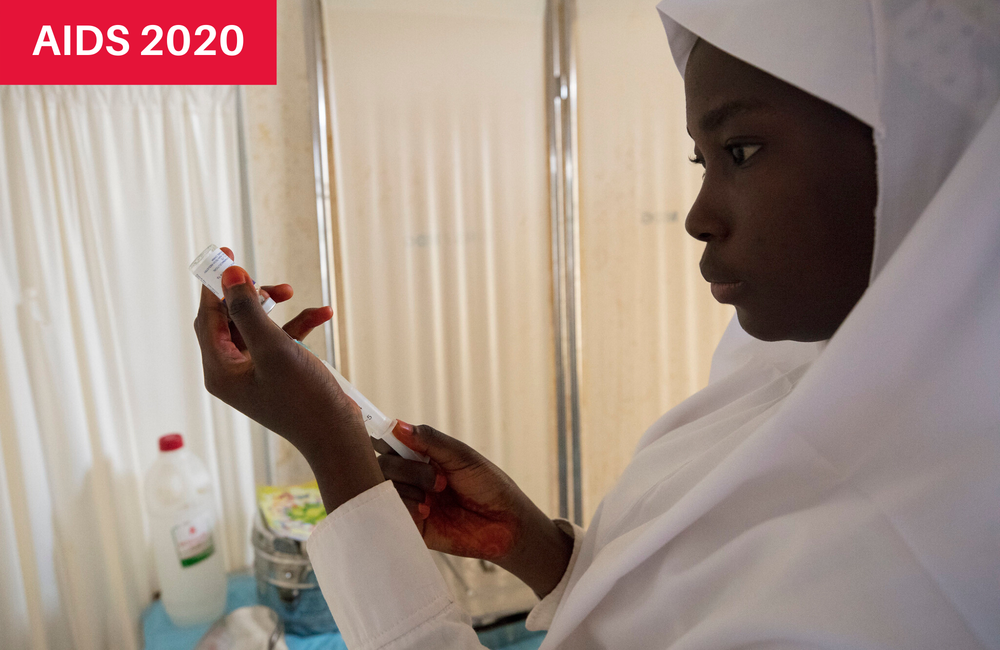
Use of the injectable hormonal contraceptive Depo Provera was associated with a doubling of bone loss in young women starting antiretroviral treatment containing tenofovir disoproxil fumarate (TDF), according to a study presented this week at the 23rd International AIDS Conference (AIDS 2020: Virtual).
Previous research has shown that people living with HIV experience accelerated loss of bone density and are at greater risk for osteopenia (low bone mineral density) and osteoporosis (more severe loss of bone density that can lead to fractures).
TDF, the older formulation of tenofovir, is highly effective and considered generally safe, but it can cause loss of bone density in susceptible individuals. Young people whose bones are still developing, as well as older individuals who naturally lose bone density with age, may be at particularly high risk. Other medications can also worsen bone loss.
Dr Flavia Matovu of the Makerere University-Johns Hopkins University Research Collaboration in Kampala, Uganda, and colleagues aimed to determine the combined effect on bone mineral density among young women who used both TDF and the widely used injectable contraceptive depot medroxyprogesterone acetate (DMPA), also known as Depo Provera.
Bone tissue is continually produced and reabsorbed. Loss of bone mineral density occurs when reabsorption outstrips bone formation. Depo Provera leads to lowered oestrogen levels that can promote loss of bone density, as seen in women after the menopause.
The researchers recruited 334 women aged 18 to 35 from 11 HIV care centres and other health facilities around Kampala. The median age was approximately 26 years.
They compared:
- 159 HIV-positive women starting first-line antiretroviral treatment (ART) containing TDF who were using Depo Provera,
- 106 HIV-positive women starting TDF-containing ART who were not using hormonal contraception, and
- 69 HIV-negative women.
The women with HIV had a median CD4 count of about 450 cells/mm3 and a viral load of about 16,000 copies/ml at baseline. Almost all the women on TDF were taking it as part of a combination regimen with efavirenz and emtricitabine (the drugs in Atripla). Around 90% achieved viral suppression after starting ART, with similar rates for those using and not using Depo Provera.
Bone mineral density was assessed by means of DXA scans of the lumbar spine, total hip and femoral neck (below the ball of the hip joint) every six months for two years. The researchers used these data to calculate the annual percentage change in bone density.
At study entry, the HIV-positive women's bone density was not significantly different from that of the HIV-negative women. Over time, however, the rate of bone loss was greater in the HIV-positive women, with the greatest loss seen among those using Depo Provera.
"Alternative contraceptive methods and newer antiretroviral regimens are needed to mitigate bone loss among young women."
Lumbar spine bone density decreased by -2.4% annually among HIV-positive women using Depo Provera and by -1.0% among HIV-positive women not using hormonal contraception, but it rose by +0.8% among HIV-negative women. Total hip bone density declined by -2.1% and -0.8% in the respective HIV-positive groups, with no loss observed in the HIV-negative group. Bone density at the femoral neck fell by -2.5%, -1.1% and 0.1% per year, respectively. These differences were all statistically significant.
"Concomitant DMPA use was associated with a doubling of bone mineral density loss in young women initiating TDF-containing ART," the researchers concluded. "High rates of bone mineral density loss demonstrate increased risk of early osteoporosis and fragility fractures in HIV-infected young women."
They suggested that alternative contraceptive methods and newer antiretroviral regimens are needed to mitigate bone loss among young women with HIV.
Tenofovir alafenamide (TAF) is a newer formulation of the drug that has less detrimental effects on the kidneys and bones compared with TDF, but is associated with increased blood lipids and greater weight gain. However, TAF may be less readily accessible in low- and middle-income countries.
Matovu FK M et al. Depo-Provera worsens bone loss with TDF-containing ART initiation in young women. 23rd International AIDS Conference, abstract OAA0403, 2020.
Correction: This article was corrected on 15 July 2020. There were 334 participants, not 265.
Update: Following the conference presentation, this study was published in a peer-reviewed journal:
Matovu FK M et al. Intramuscular depot medroxyprogesterone acetate accentuates bone loss associated with tenofovir disoproxil fumarate-containing antiretroviral therapy initiation in young women living with HIV (the BONE: CARE study): a prospective cohort study in Uganda. The Lancet Global Health, 10: e694-e704, May 2022.
DOI: https://doi.org/10.1016/S2214-109X(22)00080-8
Full image credit: Family Planning and Newborn Care. Dominic Chavez / The Global Financing Facility. Available at www.flickr.com/photos/thegff/31933325777 under a Creative Commons licence CC BY-NC-ND 2.0.
